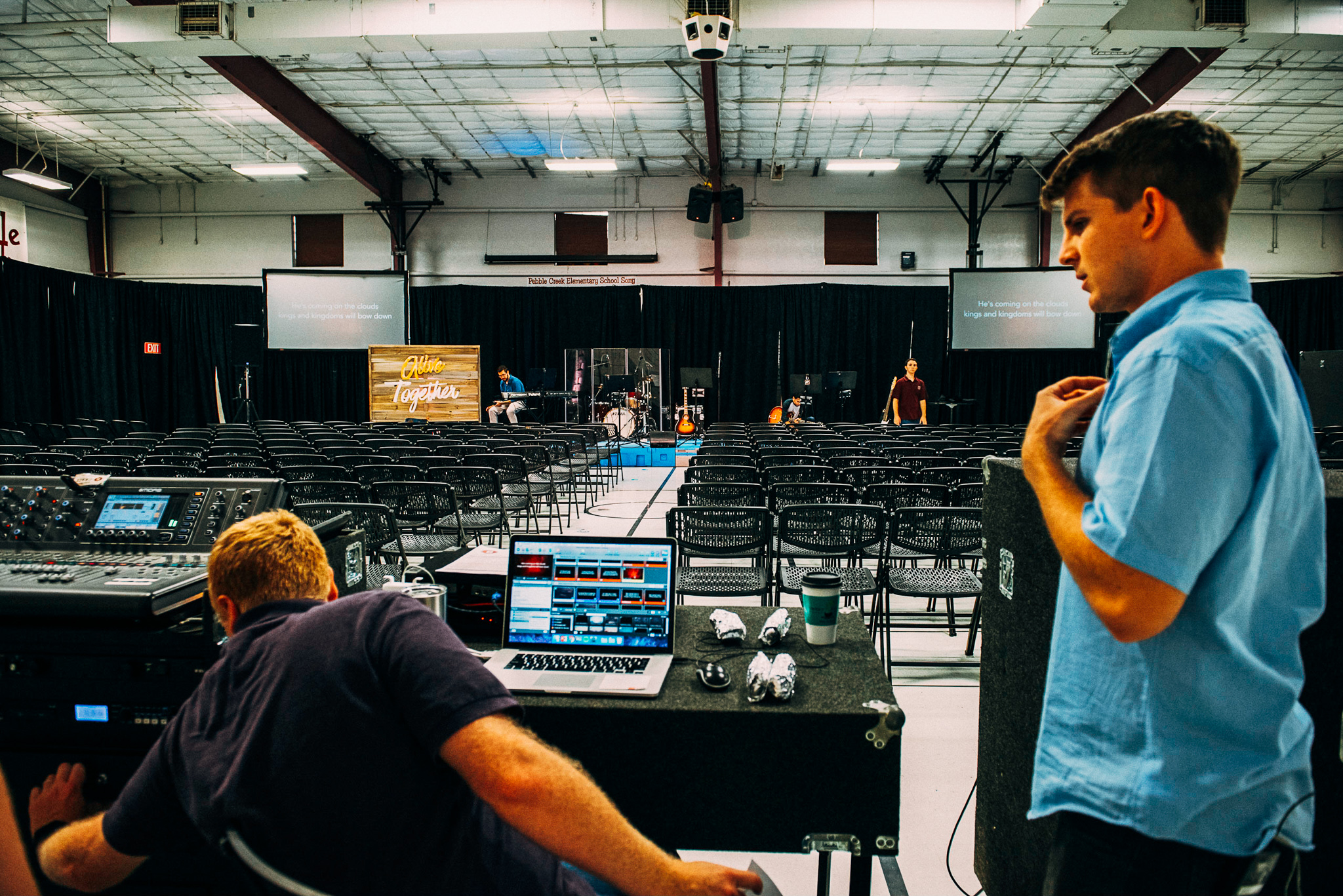What is the best approach to mixing? When I think about approaching the console to mix, I first like to think about my mix in two key areas: space and clarity. Let’s look at those.
Space
I think an important skill to learn is how to place instruments and vocals into the mix space. Think of the mix as a three-dimensional space. You want the lead vocals to be front and center while the rest of the background vocals are sitting a little further back. Then you might have drums and guitars sitting even further back and around to help fill out the sound space. Everything should work together to support each other. A very helpful tool to utilize when creating this space is panning, if the sound system allows for it. By moving certain instruments and sounds around the room, you can create extra space for vocals and instruments to cut through more effectively and fill the room. You don’t want every instrument and vocal at the same volume level; but what you do want is a nice, balanced blend. Take background vocals for example. If the song has background vocalists singing harmony under the lead melody, then the mix needs to have the background vocalists blended together and they shouldn’t be as loud as the lead singer.
Clarity
Once we understand and can create space in the mix then we can start looking at adding clarity in our mix. One of the prime directives when mixing is to make sure each vocal and instrument track can be clearly heard. This is where good EQing can really come into play. Once we have our space filled out, we want to take it to the next level by highlighting the proper frequencies of each vocal and instrument. I know it can be really tempting to hear a frequency or sound that you really like and be inclined to boost that specific range to make it stick out. I believe that taking out the frequencies we don’t want better serves the mix so that we’re left with those sounds that we do want. A good thing to remember is that EQing doesn’t create new frequencies. Think of EQing as sculpting. You’re working with raw material (the existing frequencies of your sound) and you want to be left with just those pieces that you want. Another piece to consider is that you should always EQ in the context of a mix. That’s where things need to sound good — no–one else is going to be listening for the perfect snare tone in isolation.
Something helpful is to find live recordings of worship songs that you find really good and use them as mixing references. When listening to those recordings, pick apart the mix and try to pick out each instrument and how it fits together with all of the others to form an effective and balanced mix. When you’re listening to these references, challenge yourself to start thinking in terms of space and clarity and how you can apply it to your own mixes.
Here are a couple helpful EQ resources I’ve found helpful over the years.

